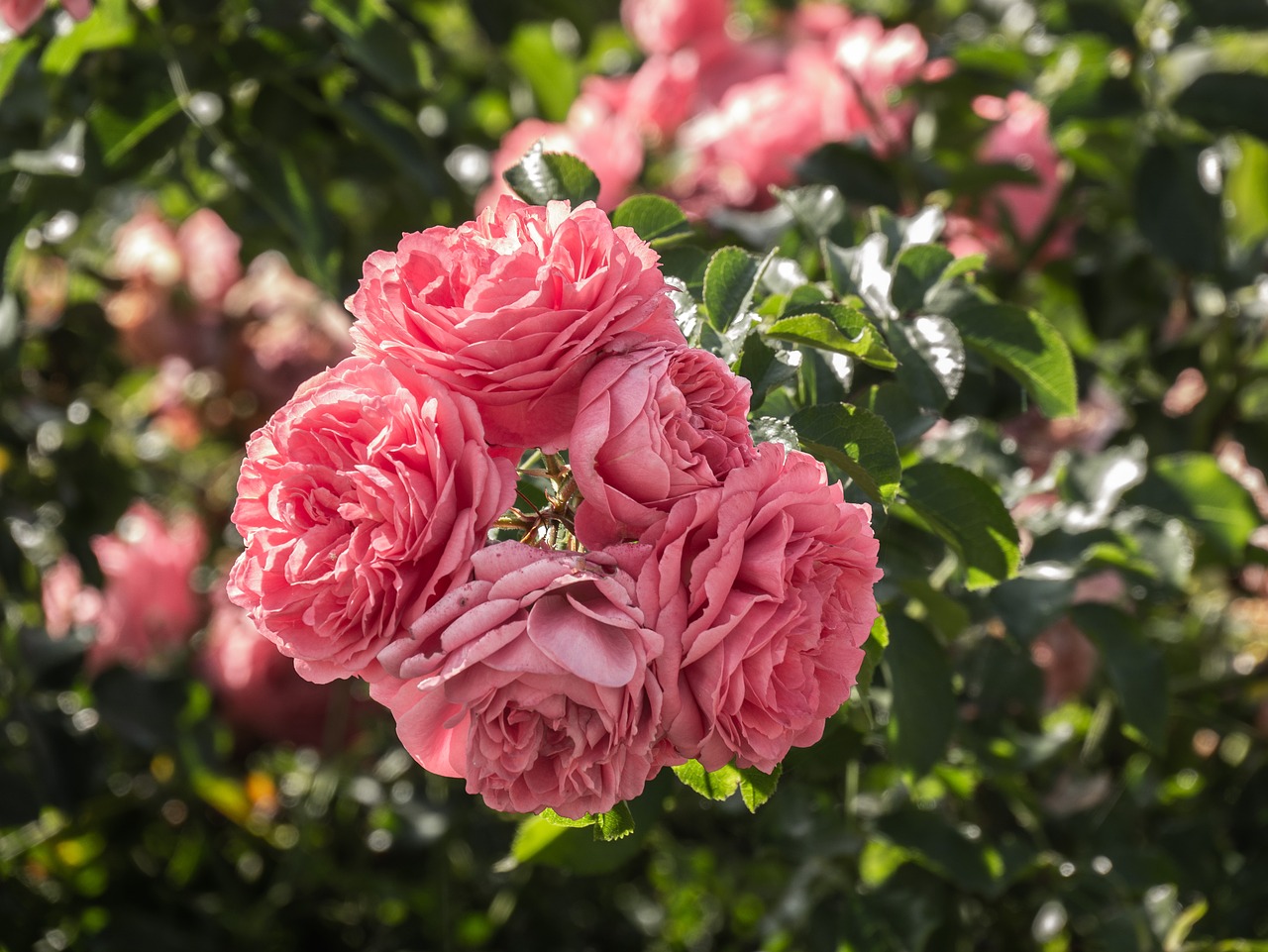Last Updated on April 5, 2024 by Real Men Sow
Roses are very well-loved and grown in gardens and formal rose borders throughout the UK. Some rose varieties are more susceptible to diseases like Blackspot, mildew, and rust. It is important to be aware of the most common rose problems and solutions so that you can identify them quickly and help your rose thrive.

Rose Problems and Solutions
Powdery mildew
Sometimes leaves can develop a powdery white appearance. Powdery mildew is a fungal disease. It can be visible on the leaves but it can also affect the stems and flower buds. This is usually caused by wet conditions or overwatering and should be treated immediately.
It’s recommended that you remove infected leaves and spray with a fungicide.
Black Spot
If you notice dark spots on your leaves and they are falling off, it is the Rose Black spot. Black spot is a very common fungal disease that can be quite dangerous. It is usually seen as black or purple spots, which eventually become larger and are then surrounded by a yellow border. It can spread to other leaves and cause them to fall off if it is not treated. To stop the spread of the fungus, you can remove the infected leaves and use a Fungicide to treat it.
Rust
Rose rust is a condition that causes yellow spots and orange pustules on leaves (such as hollyhock rust) It is also a fungal infection. However, this fungus can produce orange Spore pustules all summer. These orange pustules can be replaced by black pustules later in the season if they are not treated. The treatment, again, is to spray the plant with a fungicide and then prevent the plant from getting infected by removing damaged parts. You must be careful when removing damaged parts. This is because you don’t want to inadvertently spread the fungus further by rupturing the pustules.
Sawfly
The sawfly is the pest responsible for the leaf rolling down into a tube-shaped shape. The sawfly larvae can quickly eat roses and cause damage stripping them to stems. This must be addressed immediately. Spraying pesticides can be used to treat this problem.
Aphids leading to honeydew
If the leaves become shiny and sticky, with black growth on the top, this is a sign that there are two problems. This is usually an indication of an aphid problem; either greenfly or blackfly. The insecticide (or bug killer) must be used to kill the aphids. Honeydew is the sticky residue left behind, but you may see black growth on the top of the leaves. To prevent the spread of mould, it is important to remove all affected leaves and dispose of them properly.
Leaf-cutter bees
You may notice oval or semi-circles around the edges of your rose bush. This is an indication of leaf-cutter honeys. To make their nests, the females will remove small pieces. This is the only pest problem that is not controlled. The cuts don’t cause any damage to the plant.
Rose Flower problems and How to Solve Them
Rose blindness
Rose flowers can also succumb to the same problems as other parts of the bush. Rose blindness is often responsible for the failure to produce roses in most of your shoots. Rose blindness can be treated by cutting back the blind stems in half. Then, fertilize your plants with enough fertilizer to encourage more growth. Wait for the next season.
Flower balling
Flower balling is when your double-flowered flowers become brown and barely open. It is common to see flower balling in cold and wet weather. There is no solution but to wait for better weather conditions.
Proliferation
If your plant produces unopened flower buds within your original flower petals, this is called proliferation. The most common cause is physical damage to the flower buds. However, if your plant continues to exhibit this symptom it could be a virus infection. In that case, you’ll need to take out the entire plant.
Root Problems
Root decay is the most serious problem you’ll find in your rose bush’s root system. Root decay is often caused by diseases. It can be identified when the roots are soft and brown.
Honey fungus & Phytophthora root rot
Honey fungus is one of the most prevalent diseases. This is especially problematic for plants grown in the ground. Container-grown bushes are susceptible to Phytophthora root Rot.
Waterlogged sites leading to root rot
Most roses can be grown in clay soil. But, if they are left to sit in standing water too long, root rot can occur. This can also be caused by drainage issues in the containers.
Improve drainage
This issue can be solved by making sure that the soil drains well. You can do this by adding organic matter and grit to the soil. If you are growing in containers, make sure there are enough drainage holes and put crockery around them to prevent them from becoming clogged.
Damage roots caused by hard frost
Hard frosts can cause root damage if you grow in containers. You can protect your container with bubble wrap or Horticultural fleece when the weather turns cold.
Common Rose Problems, Sickness and Solution
It could be Rose sickness, or replant disorder, if you have recently planted roses in the ground, where roses were previously cultivated and the new roses’ roots do not grow. Gardeners who replant roses that have been cultivated previously with new roses sometimes find their roses not thriving. This is because the roses never get established. The new roses may die in more extreme cases.
To prevent this, it’s recommended that organic matter and manure be added to the soil.
Stems and branch problems
Some problems are more obvious than others. There are many causes for the death of rose branches, which is quite common.
Stem dieback
This could be a sign or manifestation of root disease, which we have already discussed. Everything suffers when the plant is unable to absorb water through its root structure.
Grey mould and Rose canker
Other cases could indicate that the dying branches are caused by a fungal pathogen. Rose canker and gray mold are quick to infest rose branches that have not yet become strong. They attack branches that have been affected by pests, nutrient deficiency, poor pruning, cold weather, or other factors. All of these potential dangers can lead to dieback, but it is usually the presence of pathogens that makes the problem more severe.
Spray pesticide when pests and aphids are spotted to stop them from breeding. Be sure to prune your roses properly at the right time of the year. You must also ensure that you address any deficiencies in nutrients by improving the soil.
Scale insects
Scale insects are small brown-colored structures that cover branches and stems. Along with greenfly, scale insects are the most common insect to attack rose bushes. These insects are flat and circular, and can be seen on branches or stems. These can be treated with pesticides, or simply by washing the plant thoroughly.
Crown gall
Sometimes, plants develop large swellings at the base of their stems. Crown gall is a bacterial infection. Although the root is the most obvious sign, it can also affect the stem and roots. It is important to get a commercial treatment as soon as possible.
Suckers from the base of rose
Below ground, suckers will grow with leaves that are slightly different from the rest of your plant. Suckers can form if your roots are damaged. To prevent this, it is important that you don’t damage the root structure while digging or hoeing. You can pull out suckers by digging down to its root structure. Many people make the error of removing a sucker at the soil level. However, if it is not removed at the root level it will regrow.
There are many diseases, pests and environmental issues that could affect your rose bush. It is important to be able to recognize the symptoms and then how to treat them.
This above information should be able to help you create a beautiful rose garden and address any problems that may arise.


